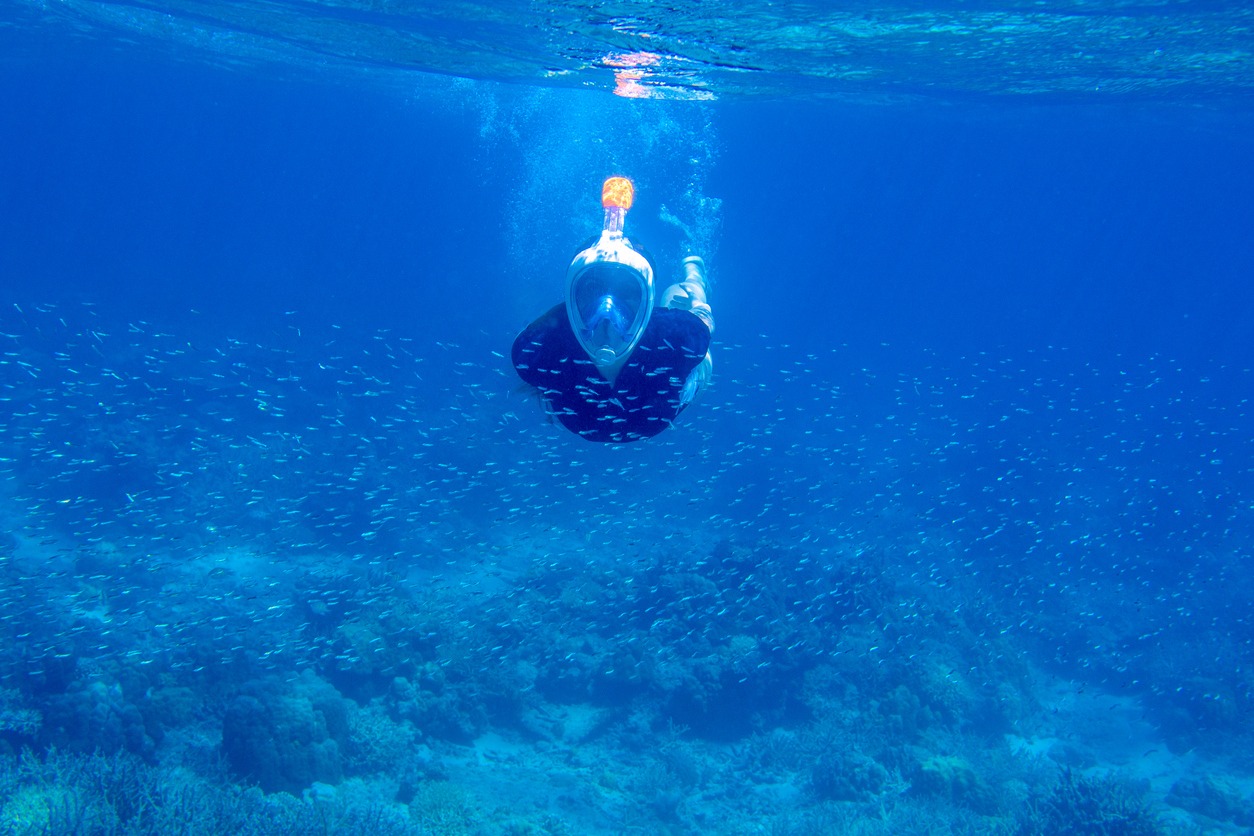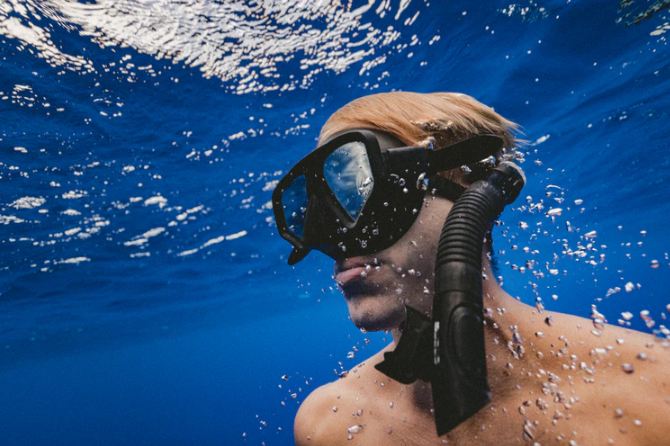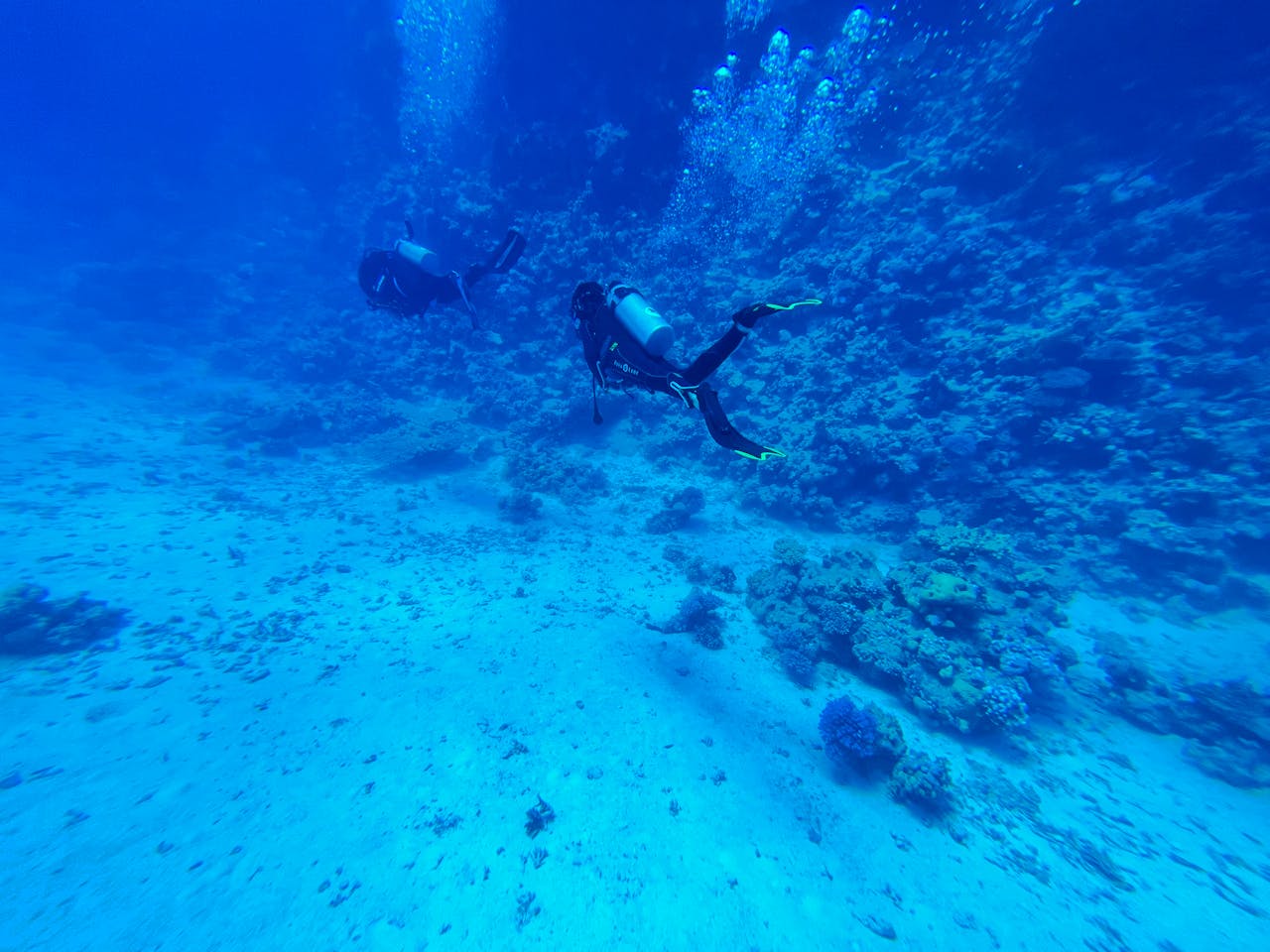Skills Needed to Capture Videos While Snorkeling
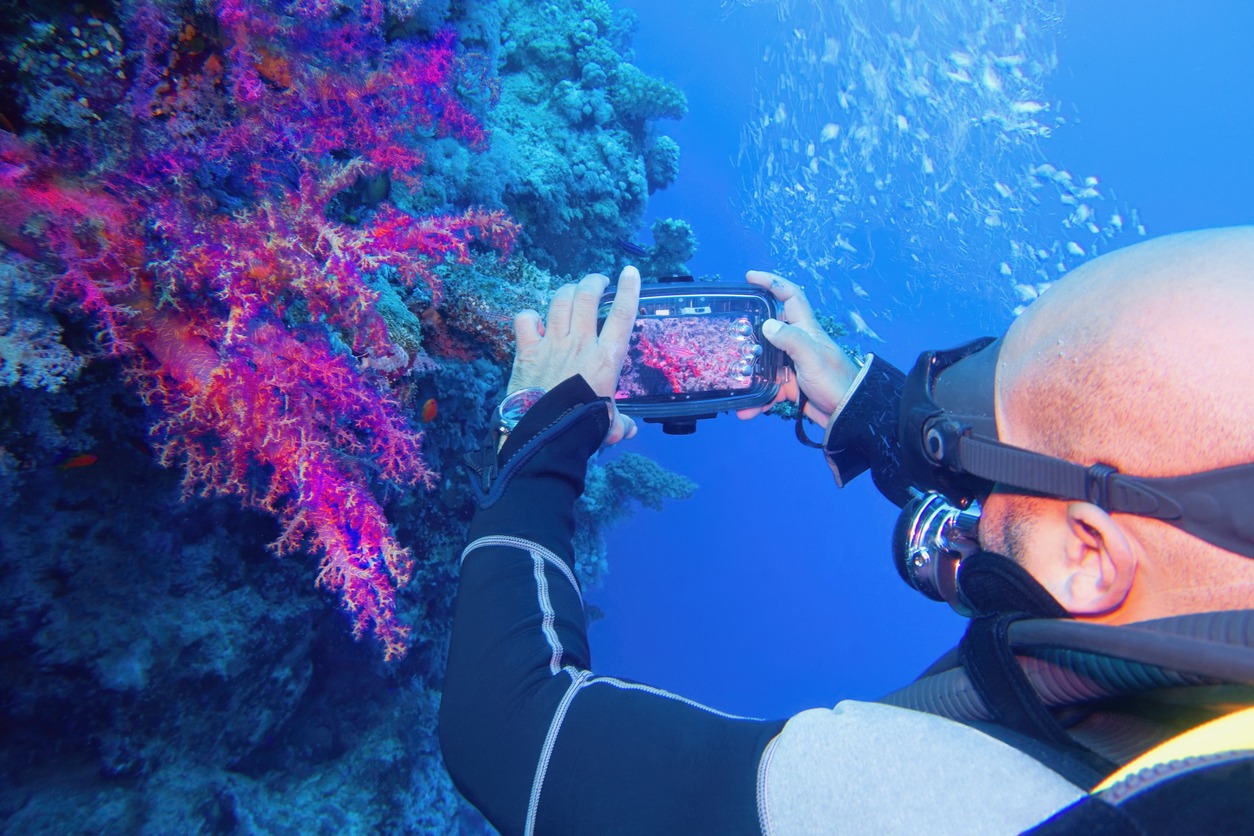
To capture great videos while snorkeling, you'll need a mix of underwater and videography skills. Become proficient in proper buoyancy control to move smoothly and stay stable. Familiarize yourself with your camera's settings and practice framing techniques underwater. Learn to manage lighting and color in the aquatic environment. Approach marine life cautiously and respectfully. Choose the right equipment and maintain it properly. Develop post-production editing skills to enhance your footage. Don't forget about environmental awareness and ethics. These skills will help you create stunning underwater videos, but there's always more to discover beneath the surface.
Proper Buoyancy Control
Five key aspects of proper buoyancy control are essential for capturing high-quality videos while snorkeling. First, maintaining proper buoyancy is indispensable for smooth and stable underwater videography. You'll need to master neutral buoyancy, which allows you to effortlessly move and position your camera for the best shots. This skill enables you to focus on capturing stunning underwater video without struggling to stay at the desired depth. Proper training on underwater breathing techniques can help you better control your buoyancy and avoid issues like shallow-water blackout.
To achieve ideal buoyancy control, you'll need to adjust your weights and the air in your BCD. This fine-tuning helps you remain at the perfect depth without constant effort, allowing you to concentrate on shooting your underwater video. Good buoyancy control also minimizes unintentional camera movements, ensuring your footage isn't shaky or jerky.
Before your snorkeling trip, it's wise to practice buoyancy skills in a pool or shallow waters. This preparation helps develop the necessary muscle memory, making it easier to maintain proper buoyancy while capturing video underwater. By mastering these buoyancy control techniques, you'll considerably improve your ability to shoot professional-looking underwater footage and create enthralling videos that showcase the beauty of the underwater world.
Camera Operation Mastery
While commanding buoyancy control is essential for stable underwater filming, it's equally important to hone your camera operation skills. Before diving in, familiarize yourself with the camera controls and settings to guarantee smooth operation underwater. Practice stabilizing the camera and maintaining consistent framing while snorkeling in shallow water to develop muscle memory.
Become an expert in the art of adjusting the white balance manually to accurately capture the vibrant colors of the underwater world. This skill compensates for the color shift caused by water, resulting in more true-to-life footage. Learn to use your camera's focus and exposure modes effectively, allowing you to capture clear, well-exposed shots of both nearby and distant subjects.
Mastering the techniques to stabilize the body and camera simultaneously is crucial for smooth, professional-quality videos. To achieve this, consider using a monopod or stabilizer to keep your camera steady during snorkeling sessions. By practicing these skills and understanding your equipment, you'll be better prepared to capture stunning underwater videos. Remember, mastering camera operation takes time and patience, but the results will be worth the effort as you create alluring underwater footage.
Composition and Framing Techniques
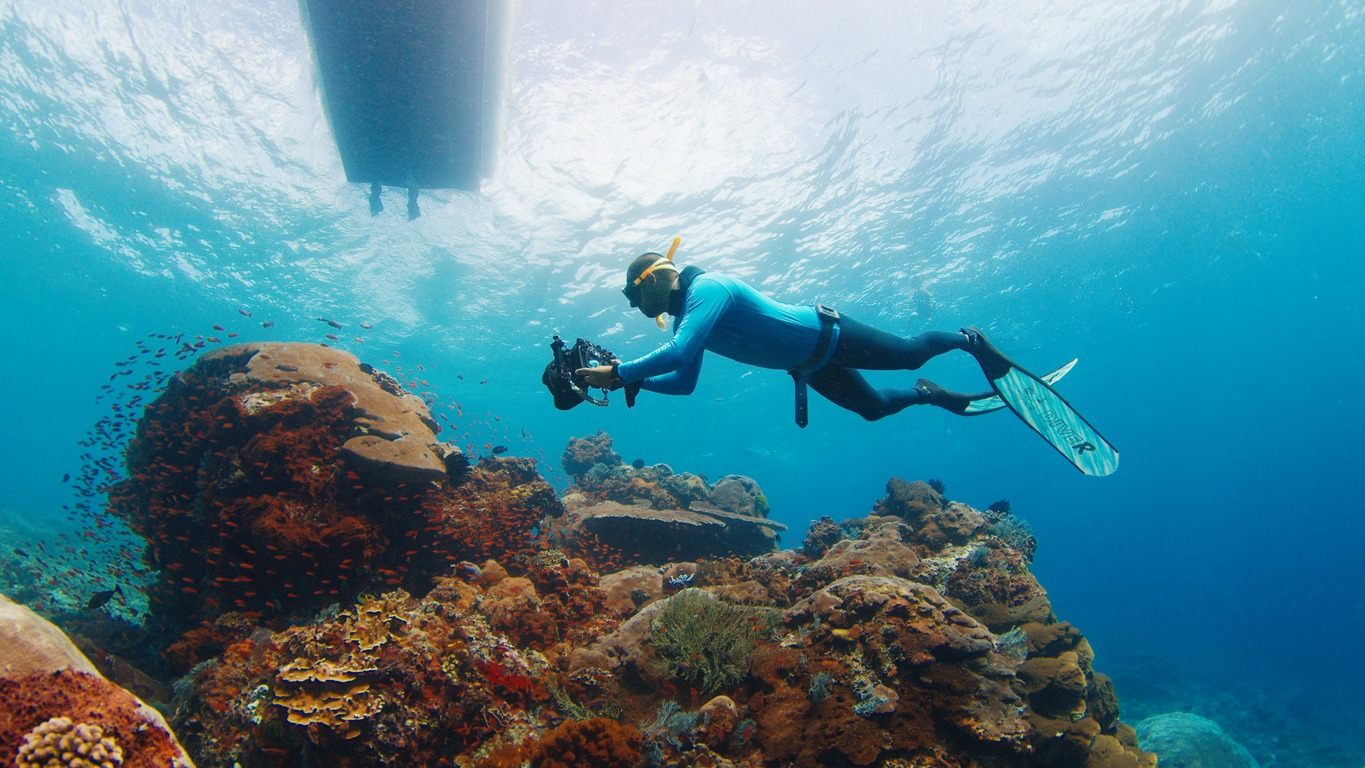
Once you've mastered camera operation, it's time to focus on composition and framing techniques. To capture great underwater footage, you'll need to apply the rule of thirds. Place your main subject at the intersections of imaginary grid lines to create a balanced and visually appealing composition. Utilize negative space around your subject to draw the viewer's attention and create depth in your shots.
When capturing underwater photography, shoot at eye-level or slightly below to establish an engaging perspective. Avoid placing the subject in the center of the frame, as this can make your shots appear static. Instead, incorporate a variety of shot types, including wide, medium, and close-ups, to provide visual interest and tell a more comprehensive story of the underwater world.
To capture vibrant colors and intricate details, get as close to your subject as possible while maintaining a respectful distance. Make sure you're not touching or disturbing marine life. Unlike traditional photography, you won't need a tripod for capturing underwater videos while snorkeling. Remember, the key to compelling underwater footage lies in thoughtful composition and framing techniques that showcase the beauty of the aquatic environment.
Lighting and Color Management
Controlling lighting and color handling is essential for capturing breathtaking underwater videos while snorkeling. As you descend into the underwater environment, you'll notice that natural light diminishes rapidly. To restore vibrant colors, especially when filming coral reefs, you'll need to use external lights or strobes. These tools help illuminate your subjects in low light conditions, bringing out the true beauty of the underwater world.
To achieve accurate color representation, you'll need to comprehend underwater white balance techniques. Manual adjustments are pivotal for correcting color casts caused by water absorbing different wavelengths of light. Shooting in RAW format gives you more flexibility to fine-tune white balance and color grading during post-processing.
When filming, avoid backlit subjects, as your camera's automatic exposure settings may struggle to properly expose them. To soften harsh sunlight and create even lighting, consider using filters or modifiers. This approach will help you achieve better color rendition in your underwater footage.
Subject Approach and Interaction
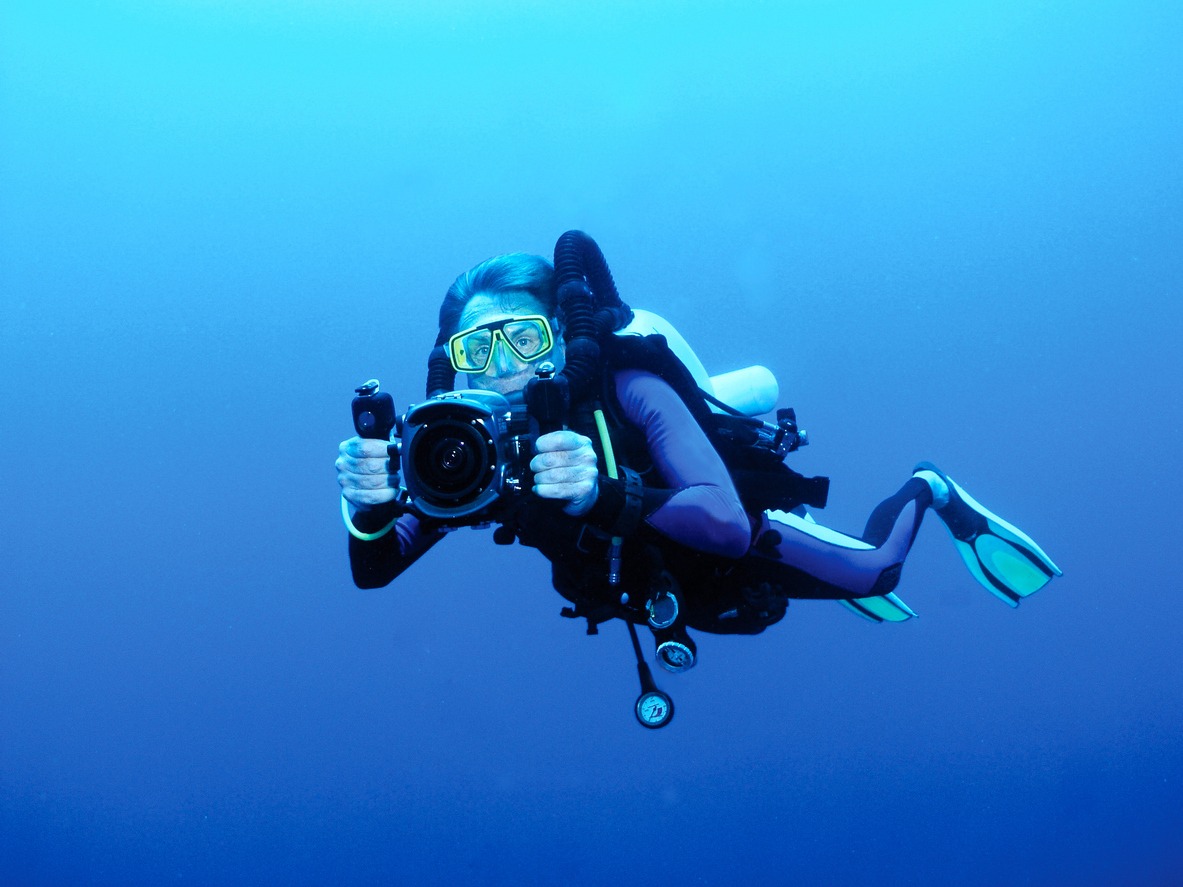
With your camera settings and lighting techniques perfected, you're ready to focus on subject approach and interaction. When capturing stunning footage of marine life, it's vital to remember that you're a guest in their habitat. Approach slowly and cautiously, maintaining a respectful distance of 3-5 meters from larger animals. This approach not only safeguards their comfort but also opens up opportunities for better videography.
Pay attention to the subject's behavior and body language before filming. If they appear stressed or agitated, it's best to back off. Avoid sudden movements or loud noises that might startle them. Instead, let the marine life approach you when possible. This patience often results in more natural and engaging footage.
Equipment Selection and Maintenance
Selecting the right equipment and maintaining it properly are essential for capturing high-quality videos while snorkeling. As an underwater videographer, you'll need to choose a waterproof camera with manual controls and excellent video capabilities. Ensure your camera's housing is rated for the maximum depth you'll be diving to prevent water damage.
To keep your underwater camera in top condition, regularly check for leaks, fogging, or other issues before and after use. This maintenance routine will help you avoid disappointing moments when you're ready to start shooting video.
Consider investing in accessories like underwater lights, stabilizers, and close-up lenses to improve your video quality. These tools can help you capture close-up shots and prevent scenes from appearing silted or murky.
Before venturing into open water, practice using your equipment in a pool or controlled environment. This will help you familiarize yourself with the camera's settings and operation. As you become more comfortable with your gear, you'll be better prepared to capture quality video footage of the underwater world. Remember, the right equipment and proper maintenance are key to successful snorkeling videography.
Post-Production Editing Skills
Post-production editing is a pivotal skill for converting raw underwater footage into enthralling snorkeling videos. To create Great Videos that showcase the art of underwater photography and videography, you'll need to master video editing software like Adobe Premiere Pro, Final Cut Pro, or DaVinci Resolve. These tools open up a whole new world of possibilities for enhancing your snorkeling footage.
Start by applying color grading techniques to correct white balance, adjust contrast, and supercharge the vibrancy of your underwater scenes. This step is indispensable for capturing the true beauty of marine life. Next, use stabilization tools to smooth out any camera shake, resulting in professional-looking footage. Don't forget to incorporate overlays, graphics, and titles to provide context and create a cohesive narrative.
To take your videos to the next level, experiment with effects like slow-motion shots or time-lapse sequences. These techniques can highlight specific behaviors or showcase the underwater environment in unique ways. By honing your post-production editing skills alongside your underwater photography skills, you'll be able to create captivating snorkeling videos that truly immerse viewers in the underwater world.
Environmental Awareness and Ethics
Environmental awareness and ethics are fundamental to responsible underwater videography. When you're Capturing Underwater videos, it's vital to understand the impact you can have on marine ecosystems. As you record stunning underwater footage, remember that your presence can disturb delicate habitats and marine life.
To practice environmental awareness, research your dive site beforehand. Understand the local regulations and any protected species. When you're in the water, maintain proper buoyancy control to avoid damaging coral reefs or stirring up sediment. Resist the urge to touch or manipulate marine life for a better shot, as this can cause stress or harm to the animals.
Consider using natural light instead of artificial lighting, which can disturb nocturnal creatures. When capturing intricate details of marine life, keep a respectful distance. Remember, Producing Great underwater videos shouldn't come at the cost of the environment.
As a responsible videographer, educate yourself on conservation efforts and use your footage to promote environmental awareness. By following these tips to help preserve marine ecosystems, you'll contribute to the sustainability of underwater environments while still creating Professional Underwater videos.

